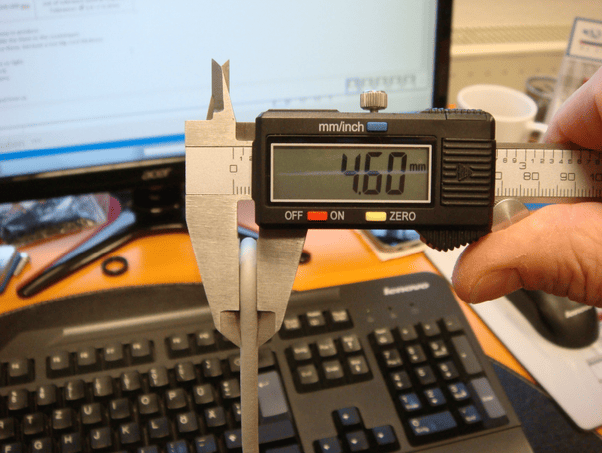When it comes to rubber gaskets, tolerance is everything. Without it, the gasket can fail to perform as expected, potentially leading to costly issues. But what exactly is tolerance?
Tolerance in rubber gaskets refers to the allowable deviation in dimensions, shape, and material properties. It ensures the gasket fits correctly, performs optimally, and prevents leaks.

But what does tolerance mean in more detail? Let’s explore the different types of tolerances and how they impact the performance of rubber gaskets.
What does "tolerance" mean in the context of rubber gaskets?
Have you ever wondered what "tolerance1" means when discussing rubber gaskets? It’s more than just a number – it’s crucial to how well a gasket seals and performs under various conditions.
In simple terms, tolerance in rubber gaskets is the permissible variation in dimensions, shape, and material properties. The tighter the tolerance, the better the performance.
Rubber gaskets play a vital role in sealing and ensuring systems run efficiently, whether in HVAC, automotive, or industrial applications. The tolerance of these gaskets defines how precise they need to be in terms of size, shape, and materials.
Dimensional Tolerance2
Dimensional tolerance refers to how much the gasket's physical dimensions can vary from the specified value. This tolerance is essential because even a minor deviation can affect the gasket's ability to form a proper seal. For example, if a gasket is slightly too small, it might not fit tightly enough to seal, leading to leaks. Similarly, if it’s too large, it may not sit properly in its groove.
Shape Tolerance
Shape tolerance involves how well the gasket maintains its designed shape during manufacturing. It’s critical because gaskets that are misshapen, even by a small amount, may fail to form a complete seal. This can be especially problematic in high-pressure or high-temperature environments where a tight seal is vital.
Material Tolerance
Material tolerance concerns the properties of the rubber itself – for instance, its hardness, elasticity, and resistance to wear. Rubber material can vary slightly between batches, and maintaining consistent material properties within a defined tolerance is key to ensuring the gasket performs as expected.
What is the Tolerance of Rubber Thickness?
Rubber thickness tolerance is crucial because it ensures that the gasket will seal properly and fit the intended space. Too much or too little thickness can lead to improper sealing, poor performance, and premature wear.
Why is rubber thickness tolerance essential?
The thickness of the rubber gasket determines how much it can compress when installed. If the gasket is too thick, it may not compress enough to form a proper seal. If it's too thin, it could be overly compressed and lose its sealing capabilities over time. The correct thickness ensures that the gasket is flexible, durable, and capable of withstanding the pressures it will face.

Factors That Affect Rubber Thickness Tolerance
Several factors influence the thickness tolerance of rubber gaskets:
- Rubber Material: Different rubber types (like EPDM, silicone, or nitrile) may have different tolerance ranges based on their flexibility and curing properties.
- Manufacturing Method: The method used to produce the gasket—whether it’s molded, extruded, or cut—can impact its thickness tolerance.
- Environmental Conditions: Temperature and pressure can cause rubber to expand or contract, affecting its thickness. This needs to be taken into account during gasket design.
Rubber Thickness Tolerance Table
| Rubber Type | Tolerance Range | Common Applications |
|---|---|---|
| EPDM | ±0.1 mm | Automotive, HVAC gaskets |
| Nitrile (NBR) | ±0.2 mm | Oil and fuel-resistant seals |
| Silicone | ±0.1 mm | High-temperature seals, food-grade |
By controlling rubber thickness within the specified tolerance range, manufacturers ensure the gaskets perform well over time, offering a reliable and consistent seal.
Why is tolerance crucial for gasket performance and sealing?
Tolerance isn’t just a technical requirement; it’s the foundation of gasket performance. A gasket with poor tolerance could easily fail under pressure, causing leaks and damage.
Tolerance is crucial because it determines how well a gasket will seal under varying pressures, temperatures, and environmental conditions. A high tolerance means a perfect fit, ensuring optimal sealing.
Understanding how tolerance affects sealing can help clarify why it’s so important. In many applications, even small variations in tolerance can lead to significant problems.
Compression and Sealing Efficiency
The tightness of the tolerance directly influences how the gasket compresses under pressure. Tight tolerances ensure the gasket is neither too hard nor too soft, striking a balance that optimizes sealing. A gasket with tight tolerances will compress uniformly, creating a consistent seal.
Leakage Prevention
Leaks are one of the most common issues caused by poor gasket tolerance. A gasket that doesn’t fit perfectly will allow air, water, or chemicals to escape. For example, in an HVAC system, this could result in loss of energy efficiency and increased operational costs.
Gasket Longevity
The longevity of a gasket is also tied to tolerance. When gaskets are made within a tight tolerance, they are less likely to experience uneven wear and degradation. This ensures that the gasket remains functional over time and reduces the need for frequent replacements.
How are tolerances measured in rubber gaskets?
You may wonder how manufacturers measure and ensure proper tolerance. The answer lies in precision tools and techniques that guarantee each gasket is within the specified limits.
Tolerance measurement in rubber gaskets is done using precise tools like micrometers and calipers. Regular inspection and testing are key to ensuring the gasket meets required standards.
Achieving precise tolerance in rubber gaskets isn’t just about using advanced equipment – it’s also about consistent quality control throughout the manufacturing process.
Tools and Techniques for Measuring Tolerance
Micrometers and calipers are commonly used to measure the physical dimensions of gaskets, ensuring they are within the required limits. These tools allow for fine adjustments and ensure that every gasket is produced to exact specifications.
Inspection and Testing Methods
Once the gaskets are produced, further testing methods, such as air pressure tests, are used to confirm that the tolerance is suitable for the intended application. This testing can identify potential issues that may not be immediately visible in the gasket’s physical form.
Role of Quality Control
Maintaining consistent tolerance across large volumes of gaskets requires stringent quality control measures. By regularly calibrating measuring tools and conducting batch testing, manufacturers can ensure that every batch of gaskets meets the required standards.
Tolerance in Custom Rubber Gaskets vs. Standard Gaskets
When comparing custom gaskets to off-the-shelf options, tolerance requirements can differ significantly. Custom gaskets often demand more precise tolerances to meet specific needs.
Custom rubber gaskets3 generally require tighter tolerances compared to standard gaskets. This ensures they fit perfectly in their unique applications, such as in complex machinery or custom-built systems.
Custom rubber gaskets often serve specialized applications where precision is paramount. While standard gaskets can be manufactured with general tolerances, custom gaskets require a higher level of accuracy to ensure proper fit and function.
Differences in Tolerance Requirements
For standard gaskets, manufacturers can allow for some leeway in dimensions and shape, as they’re designed to fit widely used components. However, custom gaskets4 must meet the specific requirements of their application, often with very tight tolerances to prevent leakage or operational failure.
Importance of Precision in Custom Manufacturing
The custom manufacturing process often involves more rigorous testing and adjustment to ensure that each gasket fits perfectly within its designated system. This ensures that the seal will be effective under varying operational conditions.
Communication with Manufacturers
When requesting custom gaskets, it’s crucial to communicate the exact tolerance specifications5 to the manufacturer. Clear instructions and collaboration are key to ensuring that the final product meets the required standards.
Conclusion
Tolerance plays a critical role in rubber gasket performance, affecting sealing efficiency, longevity, and overall system reliability. Whether for standard or custom applications, maintaining the right tolerance ensures optimal gasket function.
Understanding tolerance is crucial for ensuring optimal gasket performance and preventing leaks. Explore this resource to learn more about its significance. ↩
Dimensional tolerance is key to a proper seal. This resource will provide insights into how it impacts gasket functionality and reliability. ↩
Custom gaskets require precise tolerances for specific applications. Discover why this precision is vital for performance and sealing effectiveness. ↩
Explore the advantages of custom gaskets to understand how they can enhance precision and performance in your applications. ↩
Learn about the significance of tolerance specifications and how they affect the efficiency and reliability of gaskets. ↩







